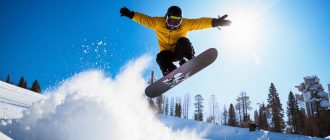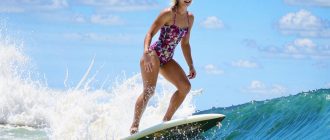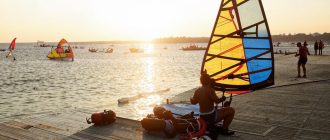Many people are still convinced that walking with poles is boring. If you walk the same route every day, the sticks may indeed soon go to the mezzanine. But it is worth turning on the imagination, and you can find many interesting ways to diversify this sport. Contrary to myths, Nordic walking is not a retirement hobby at all. What other misconceptions do we take for granted?
Sergey Mescheryakov
President of the Russian Nordic Walking Federation
This is a common misconception. In its modern version, Nordic walking really took shape in Finland, where a special stick model for this type of activity was designed. However, Finland does not belong to Scandinavia – neither geographically, nor geopolitically, nor even linguistically.
Therefore, the popular term “Nordic walking”, which is characteristic of Russia, is completely incorrect. All over the world this kind of activity is called nordic walking (literally – “northern walking”), in Finland itself it is simply called “sauvakävelu” – “walking with sticks”. By the way, in the All-Russian register of sports nordic walking is included under the correct name – Nordic walking. I recommend to use this variant.

Myth 2: Physical training for pensioners
Sergey: Unfortunately, the arrival of SC in Russia in 2010 was marked by a serious image miscalculation – the pioneers of this trend bet on training pensioners. This harmful stereotype was picked up by others. However, the Russian Federation of Nordic Walking is not going to put up with the problem, and our competitions are becoming more and more rejuvenated every year.

Myth 3: It is better to run or do fitness than just walk
Candidate for Master of Sports, trailrunner, PRO-expert Sportmaster PRO
Walking seems like such a simple activity that some people equate it with inefficiency. But it isn’t. During an hour of Nordic walking at a moderate pace (about 5.6 km/h), a person weighing about 70 kg burns an average of 375-475 calories. This involves about 90% of the muscles of the body, the risk of injury is minimal, because the work goes without heavy weights and sudden movements.
In addition, if you follow the correct walking technique, the load on the joints of the lower part of the body is reduced, and the shoulder girdle is included in the work. Thanks to this, the shoulders relax and “open up”, improves mobility of the upper spine, which is often clamped when sitting, improves the nutrition of intervertebral discs and posture, strengthens the cardiovascular system. At the same time, Nordic walking does not require any special preparation. It is available to everyone and in any weather conditions, the main thing is to carefully study the technique.

Myth 4: Nordic walking does not give sports load
The authors of this very common statement are people who have never practiced Nordic walking and have not really delved into its authentic technique. In fact, a qualified instructor of Nordic walking for an hour of lessons “will kill” the load of any experienced athlete – there are plenty of such examples in our community. Many outside observers judge Nordic walking by the walks of grandmothers in parks – and make the wrong conclusions. Real Nordic walking is a very amplitude type of activity, comparable in load to traditional cyclic sports – running, skiing, swimming.
Myth 5: Nordic walking is not good for the body
Sergei: Another misconception from the same series. The use of a competent technique of walking with poles, which powerfully involves the upper limbs and almost all muscle groups of the body, triggers a lot of recovery mechanisms and progressively increases the functional resource of the person. In addition, a rational walking technique allows you to transfer part of the harmful load from the joints to the stick, which favorably affects the entire musculoskeletal system – even in athletes with long-standing injuries.

Myth 6: It is possible not to learn the technique of Nordic walking
This thesis has the right to exist, but only for qualified athletes and coaches who have studied sports physiology and biomechanics in depth. There are many self-taught Nordic walkers in the community, but only a small percentage of them are able to extract real effect from the lessons. The technique of Nordic walking is available to everyone, but it has a lot of nuances that only a few people can understand on their own.
Sergey: For most people, before walking with two Nordic poles, we strongly recommend taking at least a couple of lessons from a specialist. Just for an hour or two of communication with a qualified instructor, you will acquire so many useful “lifehacks” that your subsequent classes will turn into a continuous stream of positivity for the body.

Myth 7: Any poles will do for exercise
No arguments – even walking with two rake sticks can help a person get healthy. The question is the degree of effectiveness. Special sticks are balanced and equipped in such a way as to bring maximum benefit and minimize damage to joints and ligaments. The more expensive the poles are – the more quality materials are used in their manufacture – accordingly, there is less risk of unpleasant costs (for example, in the form of arthritis of the elbow joint).
Sergei: Can I use ski poles? Answer: You can – but provided that the ski poles are correctly selected in height specifically for Nordic walking (70% of your height) and are equipped with a professional half-stick, not just a loop. Only such options will allow you to match your equipment with the correct technique of Nordic walking. And do not be frightened by the price policy: the cost of cool Nordic sticks usually does not exceed 5-7 thousand rubles, and they will last you a long time.
Myth 8: You can walk without sticks
Victor: Of course you can. But it will not be northern walking. And not even sports (in it, participants accelerate to 16 km / h, and in Nordic walking do not chase speed). It will be ordinary walking, in which the legs and spine are quite heavily loaded, and the shoulder girdle is used to a minimum. It will not improve posture and arm strength as effectively as Nordic walking. And if you have spine and lower back problems, regular long walks can even make the problems worse.

Myth 9: Nordic walking is not a sport
Sergey: Since 2019, northern walking is officially entered in the All-Russian register of sports as a discipline of sports tourism. On northern walking for a dozen years, competitions have been held, and since the current year even assign sports discharges. The Russian Federation of Nordic Walking is now working to make walking with poles a separate sport. So the time is not far off when we will have masters of sports of international class and honored coaches of Russia. Don’t miss your chance to join a promising sports movement in time!






